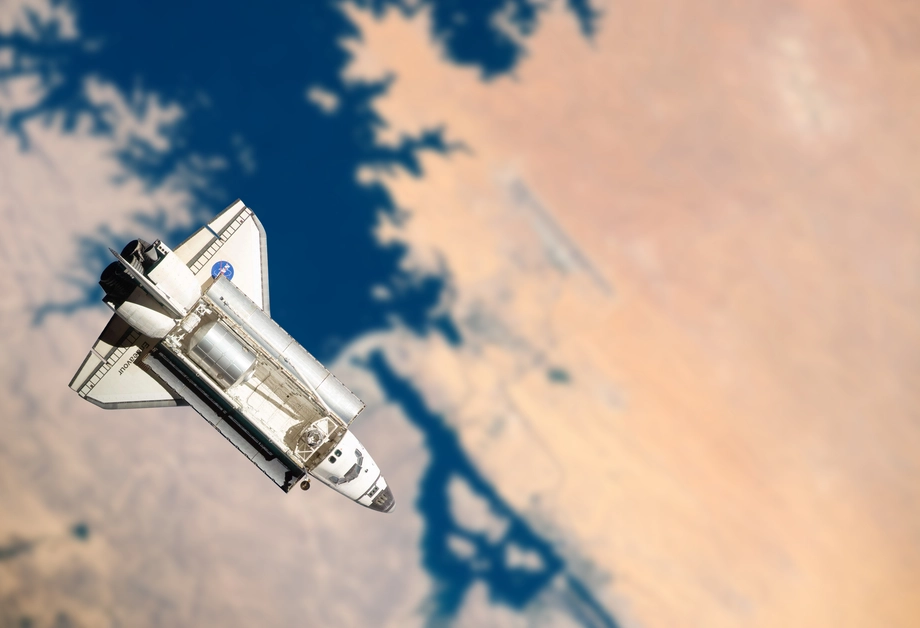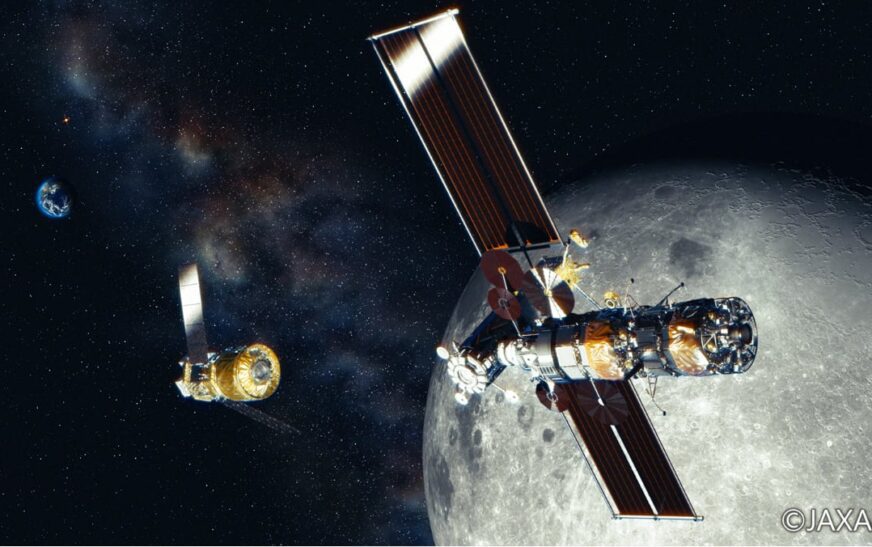Introduction to Space Exploration

Space has always captivated human imagination. The endless expanse of the cosmos beckons us to explore its mysteries, pushing the boundaries of our understanding. As technology evolves at a breakneck pace, we find ourselves on the brink of unprecedented discoveries beyond Earth. From launching probes into distant realms to sending humans back to the Moon and even planning missions to Mars, space exploration is an exhilarating journey fueled by innovative technologies.
But what exactly powers these ambitious endeavors? How do advancements in various fields enable us to reach for the stars? In this blog post, we’ll delve into the fascinating world of space technologies that are transforming how we explore and understand our universe. Get ready for a thrilling ride through innovation!
The Evolution of Space Technologies

Space technologies have transformed remarkably since the dawn of the Space Age. In 1957, Sputnik made history as the first artificial satellite, marking humanity’s initial foray into orbit. This event sparked a technological revolution.
The following decades saw rapid advancements. From powerful rockets like Saturn V to sophisticated space probes exploring distant planets, each innovation built on previous successes. The launch of space shuttles introduced reusable technology, enhancing cost efficiency and accessibility.
As we moved into the 21st century, miniaturization became key with CubeSats. These small yet powerful satellites allow universities and companies to participate in space exploration without exorbitant costs.
Today, private companies are pushing boundaries with new approaches and innovative designs. Technologies such as reusable rockets are redefining what is possible in transportation beyond our atmosphere while increasing sustainability efforts in this vast frontier.
Advancements in Satellite Technology

Satellite technology has seen remarkable growth in recent years. New designs and materials have made satellites lighter and more efficient. This means they can be launched at a lower cost.
The advent of miniaturization has led to the rise of CubeSats. These small, versatile satellites are ideal for specific tasks like climate monitoring or disaster management. Their affordability allows even universities and research institutions to participate in space missions.
Further advancements include enhanced imaging capabilities. High-resolution cameras provide stunning images of Earth, aiding in agriculture, urban planning, and environmental conservation.
Additionally, communication satellites have expanded internet access globally. They bridge the digital divide in remote areas by offering connectivity where traditional infrastructure falls short.
Innovations such as propulsion systems are improving satellite lifespan and maneuverability. As these technologies evolve, they open new doors for exploration beyond our planet’s orbit.
Utilizing Artificial Intelligence in Space Exploration
Artificial Intelligence (AI) is revolutionizing space exploration. It brings efficiency and precision to complex missions.
NASA and other space agencies deploy AI algorithms for real-time data analysis. This allows spacecraft to make autonomous decisions, critical in scenarios where communication delays with Earth can hinder operations.
Robotic rovers on Mars utilize machine learning to navigate the terrain. They adapt their routes based on environmental obstacles, ensuring optimal paths without human intervention.
Furthermore, AI aids in analyzing vast amounts of astronomical data. It identifies patterns or anomalies that humans might overlook, speeding up discoveries about distant galaxies and celestial phenomena.
As we venture deeper into space, AI will play an even more significant role in mission planning and execution. The potential for enhanced safety and success rates is immense as these technologies evolve alongside our understanding of the universe.
The Role of 3D Printing in Space Travel
3D printing is revolutionizing space travel in remarkable ways. It offers the ability to create parts on demand, reducing the need to launch heavy supplies from Earth. This technology can fabricate everything from tools to complex components right on spacecraft or planetary surfaces.
Imagine astronauts printing replacement parts during a mission. This capability enhances self-sufficiency and minimizes downtime. Instead of carrying extra equipment, they can manufacture what they need when they need it.
Additionally, 3D printing allows for innovative designs that traditional manufacturing cannot achieve. Lightweight structures with intricate geometries provide strength without excess mass.
The potential extends beyond our planet too; future lunar bases or Martian habitats may be built using local materials through this technique. By utilizing resources found off-Earth, we could significantly lower costs and increase sustainability in space exploration efforts.
Potential Future Technologies for Space Exploration
The future of space exploration is bursting with potential. One exciting avenue involves propulsion technologies that could reduce travel time to distant planets significantly. Imagine reaching Mars in just a few weeks instead of months.
Then there’s the concept of space elevators. This revolutionary idea could streamline transportation from Earth’s surface into orbit, making launches more efficient and cost-effective.
Another intriguing development lies in advanced habitats for prolonged missions. These self-sustaining structures will allow astronauts to live comfortably on other celestial bodies, providing essential resources like water and oxygen.
Moreover, quantum computing holds promise for processing vast amounts of data collected during explorations faster than ever before. This leap in computational power might unlock secrets about our universe previously thought unattainable.
As we look ahead, these emerging technologies can redefine how humanity interacts with the cosmos. Each innovation brings us closer to unlocking the mysteries beyond our planet.
Impact of Space Technologies on Everyday Life
Space technologies have infiltrated our daily routines in ways we often overlook. For instance, GPS relies on satellites orbiting Earth to provide location accuracy. This innovation has transformed navigation and travel.
Communication is another area significantly impacted by space advancements. Satellite technology enables instant connectivity across the globe, allowing for seamless communication through phone calls and internet access.
Healthcare also benefits from these innovations. Telemedicine thrives on satellite communications, providing remote consultations to patients in underserved areas.
Moreover, weather forecasting has improved dramatically thanks to data gathered from space-based instruments. Accurate predictions help us prepare for natural disasters, saving lives and property.
As we continue exploring the cosmos, the ripple effects of these technologies will touch even more aspects of our lives. The connection between space exploration and everyday convenience underscores a fascinating reality: what happens beyond Earth can directly enhance life down here.
Ethical Considerations and Challenges in Space Exploration
The rush to explore space brings forth significant ethical dilemmas. As nations push boundaries, questions arise about ownership of celestial bodies. Who truly has the right to claim resources on asteroids or moons?
Moreover, environmental impacts are crucial. Human activities could disrupt potential ecosystems in outer space. Is it wise to risk contamination of other worlds for the sake of exploration?
There’s also a question of equity. The benefits derived from space technologies often favor wealthy countries and corporations, leaving developing nations behind.
Consider human safety in long-duration missions. Ethical concerns arise regarding consent and the mental health implications for astronauts venturing into deep space.
Navigating these complexities requires careful thought and collaboration among global stakeholders to ensure that we tread lightly in our quest for knowledge beyond Earth’s atmosphere.
Conclusion
Space exploration has long captured the imagination of humanity. The technologies driving this endeavor shape not only our understanding of the universe but also how we live on Earth. From satellites that provide real-time weather data to artificial intelligence systems analyzing vast amounts of astronomical data, each innovation plays a crucial role.
3D printing is revolutionizing space travel by enabling in-situ resource utilization, allowing astronauts to create tools and even habitats using local materials. Looking ahead, concepts like ion propulsion and advanced energy sources promise to push boundaries further than ever before.
As these technologies evolve, they ripple through everyday life. GPS navigation relies on satellite technology; medical imaging benefits from advancements originally developed for space missions; even weather forecasting has improved thanks to innovative sensors launched into orbit.
Yet with every leap forward comes ethical considerations. How do we ensure responsible use of resources in outer space? What are the implications for potential colonization efforts? These questions loom large as we venture deeper into the cosmos.
As we stand at this exciting crossroads, it’s clear that space exploration will continue to expand our horizons—both literally and figuratively—fueling discoveries that enhance our lives while challenging us to think critically about our future among the stars.










